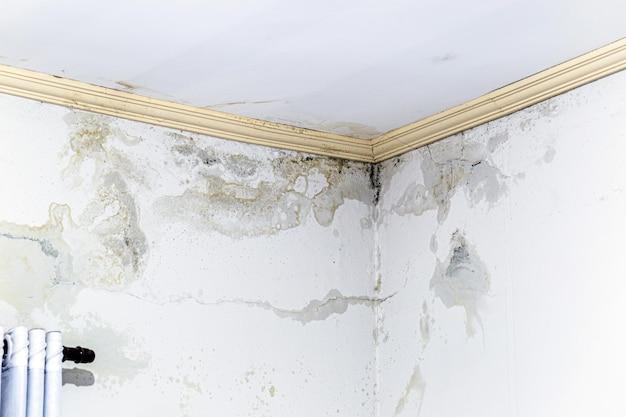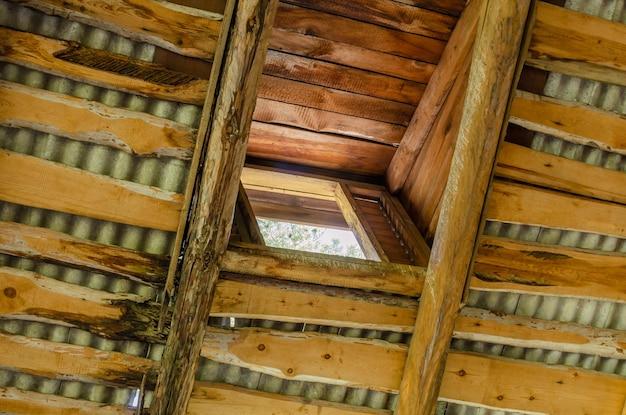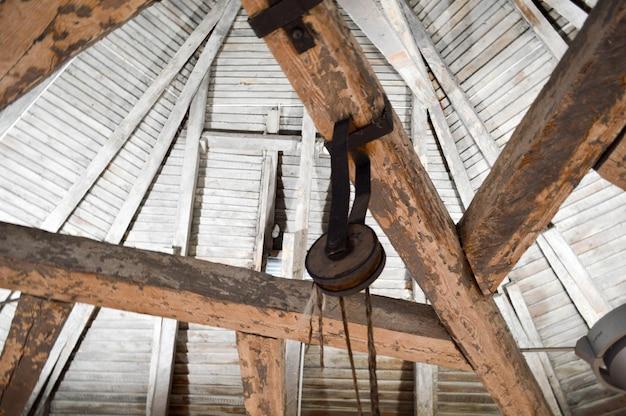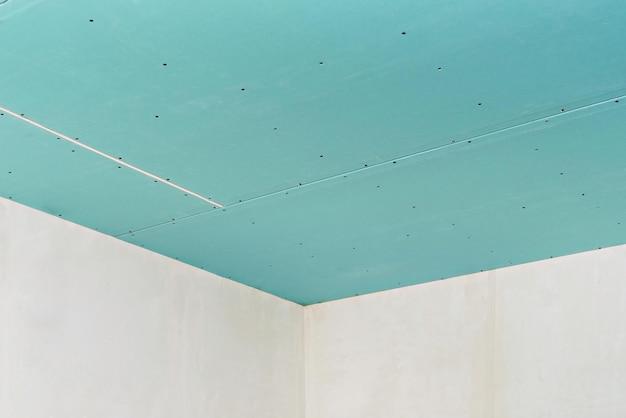Are you experiencing a leaky roof but don’t have an attic to help you locate the source? Don’t worry, we’ve got you covered! Discovering a leak in your roof can be a nerve-wracking experience, but with the right approach, you can successfully pinpoint the problem area. In this blog post, we will guide you through the process of finding a roof leak without an attic, providing you with the necessary steps to identify and resolve the issue. So, let’s roll up our sleeves and get started on fixing that pesky leak!
How to Detect a Roof Leak Without an Attic
Are you experiencing a leaky roof but don’t have an attic? Don’t worry, we’ve got you covered! While not having an attic might seem like a setback, there are still effective ways to detect and locate roof leaks. In this article, we’ll walk you through some practical techniques to find a roof leak without an attic.
Look for Water Stains on your Ceilings and Walls
The first step in finding a roof leak without an attic is to inspect your ceilings and walls for any water stains. These stains are often indicators of water seeping through the roof. Keep an eye out for discolored patches or brownish marks, as they could be signs of a leak above.
Check for Mold or Mildew
Another clue that could lead you to a roof leak is the presence of mold or mildew in your home. Moisture from a leaking roof can create the perfect environment for these unwelcome invaders. So, keep an eye out for any signs of mold or mildew growth on your walls, ceilings, or even your furniture.
Examine the Roof Exterior
Head outside and take a close look at your roof’s exterior. Look out for missing or damaged shingles, as they can create gaps that allow water to seep in. Check for cracked flashing around chimneys, vents, and skylights as well. These are common areas for leaks to occur.
Get a Helping Hand
Sometimes, finding a roof leak can be a challenging task, especially without an attic. In such cases, it can be beneficial to enlist the help of a friend or family member. One person goes inside the house with a flashlight while the other person gets on the roof with a hose. The person on the roof can spray water on specific areas, while the person inside checks for any leaks or drips.
Create a Fake Rainstorm
If you live in a dry area or it’s currently the dry season, creating a fake rainstorm might help reveal any hidden leaks. Take a garden hose and carefully spray water on different sections of your roof. Start from the bottom and work your way up. Have a keen eye on the inside of your home for any signs of water dripping or moisture.
Don’t Forget the Gutters
Clogged gutters can also contribute to roof leaks, so make sure to include them in your inspection. Remove any debris or leaves that might be blocking the flow of water. Ensure that the gutters are securely attached to your home, as loose gutters can cause water to overflow and find its way into your roof.
Detecting a roof leak without an attic is possible by following these techniques. From inspecting your ceilings and walls for water stains to creating a fake rainstorm, these methods will help you identify the source of the leak. Remember, if you’re uncertain or the leak persists, it’s always best to consult with a professional roofer to address the issue promptly.
What to Do If You Discover a Roof Leak
Assess the Situation: Don’t Panic!
So, you’ve discovered a roof leak, huh? Take a deep breath and don’t panic! Panicking won’t solve anything, but a calm and composed mindset will help you tackle this issue like a pro. The first step is to assess the situation. Is the leak causing major damage or is it just a minor drip? Understanding the extent of the leak will help you determine your next course of action.
Collect Your Tools: A Handyman’s Arsenal
Now that you know what you’re dealing with, it’s time to gather your tools. Don’t worry; you won’t be needing a belt full of gadgets like Batman. Instead, focus on the essentials. Grab a sturdy ladder, a bucket to catch any dripping water, some towels to soak up excess moisture, and a flashlight to illuminate the dark corners of your attic. With these trusty tools by your side, you’ll feel like the hero of your own leaky roof adventure.
Find the Source: Become Sherlock Holmes
Now it’s time to harness your inner detective skills and find the source of the leak. Start by checking for obvious signs like water stains, damp areas, or discoloration on your ceiling. Follow the trail and work your way up towards the attic. If your roof doesn’t have an attic, don’t stress! You can still use your sleuthing abilities by inspecting the roof from outside. Look for shingles that are missing, cracked, or damaged, as these can be potential culprits.
Patch It Up: Treat Your Roof with TLC
Once you’ve pinpointed the pesky leak, it’s time to patch it up. But before you start channeling your inner Bob the Builder, let’s make sure safety comes first. If the leak is extensive or you feel unsure about your DIY skills, it’s always a good idea to call in the professionals. However, if it’s a minor issue within your capabilities, go ahead and fix it yourself. Replace damaged shingles, apply roofing cement to seal cracks, or use roofing tape as a temporary fix until professional help arrives. Your roof will thank you for the TLC!
Prevent Future Leaks: Be Proactive, Not Reactive
Now that you’ve successfully resolved the leak, let’s take a moment to discuss prevention. No one likes surprises, especially when they involve water dripping into your home. To avoid future leaks, regular roof maintenance is key. Keep an eye out for any loose or damaged shingles, clean your gutters to prevent water build-up, and trim any overhanging tree branches that could cause damage in a storm. By being proactive, you can save yourself from future headaches and keep your roof leak-free for years to come.
Conclusion: You’ve Got This!
Discovering a roof leak can be a frightening experience, but armed with the right knowledge and tools, you can handle it like a pro. Remember to stay calm, assess the situation, and locate the source of the leak. Patch it up with love and care, and take preventive measures to avoid future leaks. With your handy toolbox and newfound detective skills, you’ll be the neighborhood’s go-to roof leak expert in no time. So, chin up, my friend, and show that leak who’s boss!
How Do I Pinpoint Where My Roof Is Leaking
Finding a leak in your roof can be like searching for a needle in a haystack, especially if you don’t have an attic to access. But fear not, we’ve got some clever tricks up our sleeves to help you pinpoint exactly where that sneaky leak is coming from.
Look for Water Stains and Mold
Start your hunt by inspecting the interior of your home for any water stains or signs of mold. These clue-filled indicators can give you a general idea of where the leak might be originating. Pay extra attention to corners and areas where walls meet the ceiling, as leaks tend to gravitate to these spots.
Grab a Flashlight and Head Outside
Now it’s time to take your investigation outside. Arm yourself with a trusty flashlight and carefully climb up to the roof. Once you’re up there, keep an eye out for missing or damaged shingles. Cracked or curled shingles are often the culprits behind leaks, so make sure to mark any suspicious spots for further inspection.
Get Your Hose Ready
Now comes the fun part: simulating rain. Grab your hose and ask a friend to assist you from inside the house. Start by spraying a small area of the roof while your helper keeps an eye out for any signs of moisture inside. Work methodically, moving the hose around and checking after each section until you hit the leak jackpot.
Follow the Drip
If you’ve successfully located the leak from inside, follow the drip trail up to the roof for a more precise pinpointing. Even if you haven’t spotted the leak indoors, look for wet spots or drips on the underside of the roof sheathing. Water has a way of traveling, so be diligent in your search and take note of any clues you discover.
Utilize Smoke or Incense
For those extra tricky leaks, smoke or incense can be your secret weapon. Wait for a calm day with no wind and light some incense or a smoke stick. Slowly move it around suspected leak areas, watching carefully for any changes in the smoke’s direction. This method can help you identify even the tiniest of leaks that may be evading your detection skills.
Call in the Professionals
If all else fails, it’s time to call in the big guns – professional roofers. They have the skills, experience, and tools needed to track down even the most elusive leaks. Sometimes, it’s best to leave it to the experts and avoid any DIY headaches.
Finding a leak in a roof with no attic may seem like a daunting task, but armed with these tips, you’re well-equipped to tackle the challenge with ease. Remember, patience and perseverance are key. Good luck on your leak-hunting adventure!
Can You Fix a Leaking Roof From the Inside
Introduction
Dealing with a leaking roof can be a real headache, especially when you don’t have easy access to your attic. But fear not! In this section, we’ll explore whether it’s possible to fix a leaking roof from the inside. So grab your toolbelt, put on your superhero cape, and let’s dive in!
Assess the Situation
Before attempting any repairs, it’s crucial to assess the extent of the leak. Grab a flashlight and carefully inspect the area where you suspect the leak is occurring. Look for any signs of water stains, wet spots, or mold growth. This detective work will help you pinpoint the exact location of the leak and determine if it’s something you can tackle from the inside.
DIY Fixes
For minor leaks, there are a few DIY techniques you can try from the inside. One popular method is to use roofing cement or silicone caulk to seal small cracks or gaps. Apply the sealant around the suspected leak area, making sure to cover any potential entry points for water. However, keep in mind that these fixes are temporary and may only be effective for a short period.
Temporary Solutions
If you’re facing a heavy downpour or can’t immediately fix the leak, it’s good to have some temporary solutions in your back pocket. One option is to use a tarp or plastic sheeting to cover the affected area. Secure it tightly with nails or heavy-duty tape, ensuring no gaps for water to seep through. This makeshift roof can provide temporary relief until you can address the issue properly.
Call in the Pros
When it comes to significant leaks or roof damage, it’s best to leave it to the professionals. Roofing experts have the tools, knowledge, and experience to identify and fix the root cause of the problem. They can assess the situation from both the inside and outside of your home, ensuring a thorough repair that lasts.
While it may be possible to fix a leaking roof from the inside, it’s important to remember that this approach may not always provide a long-term solution. DIY fixes and temporary solutions can buy you some time, but consulting with a roofing professional is ultimately the best way to address the issue effectively. So, take a deep breath, don’t let the leak rain on your parade, and reach out to those roof repair superheroes who will save the day!
What Does a Roof Leak Look Like on the Ceiling
When it comes to roof leaks, one of the first signs you’ll notice is the damage it causes to your ceiling. You might be wondering what a roof leak actually looks like on the ceiling. Well, fear not! We’re here to help you identify those telltale signs.
Dark Stains and Discoloration
One of the most common indicators of a roof leak on your ceiling is the appearance of dark stains or discoloration. These unsightly marks can be brown, yellow, or even gray in color. So, if you suddenly spot an abnormal patch on your ceiling, resembling a mini abstract painting, it’s time to investigate further.
Bulging or Sagging Areas
A roof leak can also cause your ceiling to develop bulging or sagging areas. If you notice any unusual curves or dips in your ceiling, it’s a clear sign that water has made its way inside. Your ceiling should be as flat as a pancake, so any bulges or sags are a cause for concern.
Peeling Paint or Wallpaper
Another visual clue that you might have a roof leak is if you notice peeling paint or wallpaper on your ceiling. The moisture from the leak can weaken the adhesion of the paint or wallpaper, causing them to lift and peel away. It’s like watching your ceiling shed its skin, and it’s not a good look!
Mold and Mildew Growth
Roof leaks create a perfect breeding ground for mold and mildew. If you start to see small patches of fuzzy growth on your ceiling, it’s a strong indication of water infiltration. And let’s be honest, a ceiling infested with mold and mildew is about as appealing as a slice of cheese left out in the sun too long.
Dripping Sounds or Water Puddles
Sometimes, you might be lucky enough to hear the gentle dripping sounds of water hitting your ceiling. It’s like having your very own DIY rain sound machine, except it’s definitely not relaxing when water is seeping into your home. If you’re experiencing this, it’s time to grab an umbrella and get that leak fixed.
Remember, catching a roof leak early can save you from major headaches and expenses down the line. So, keep an eye out for these visual clues, and if you spot them, it’s time to call in the professionals. Don’t let your ceiling turn into a modern art masterpiece you never asked for!



